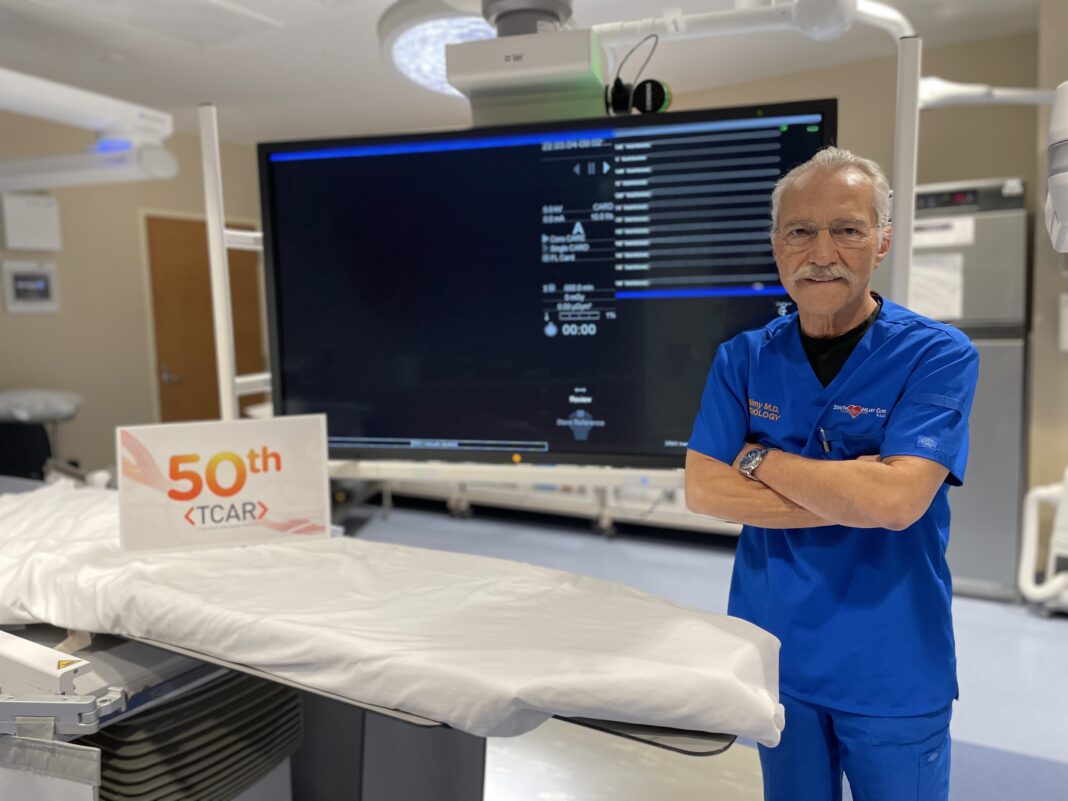HARLINGEN — The half-century mark.
Dr. Shereef Hilmy, 72, just hit that milestone Friday when he performed a life-saving surgical procedure for the 50th time at Harlingen Medical Center.
The procedure is called TCAR – transcarotid artery revascularization. The operation treats carotid artery disease, but what does the long word mean?
“We take the flow from the carotid artery and put it through a filter and a pump that sort of pulls the blood back out from the carotid artery and puts it into the vein in the leg,” said Hilmy, chief of cardiology and director of the cardiac catheterization laboratory at HMC.
The procedure is intended for a specific age group.
“Anybody over 75 is considered at high risk for ordinary surgery and anesthesia, so they would be a good candidate for that procedure,” he said.
Hilmy hails from Egypt but he’s been with HMC since it opened in 2002. He also practices surgery at Valley Baptist Medical Center and Knapp Medical Center, but most of his work is at HMC. He brings a wealth of training and experience to his patients.
“I came to the United States the first time in 1967, and then I left the states and I went to India for awhile,” he said. “I was in Europe for some of the time, and I came back to the states and I’ve been in the states since 1967.”
He spoke with great authority and enthusiasm about the TCAR procedure which he said prevents clots and small particles of plague going into the brain during surgery.
“Carotid surgery has been around for 40 or 50 years at least, and balloons and stents have been used for about 20 years,” he said.
During the TCAR, stents are still implanted but in a much safer way. Balloons are also sometimes used. Both stents and balloons were used pre-TCAR, but …
“The results are not nearly as good as TCAR,” he said. “It really has the best statistics and outcomes in terms of complication rates strokes, hospitalization, length of stay and other associated problems.”
This improved outcome is achieved through a collaborative effort of multiple teams and specialties.
“We have the surgical team involved, we have the technicians involved, we have the cardiologists involved,” he said. “It’s a well-oiled machine in a sense because we’ve been doing this for a long time. When we start, the surgeons make an incision at the base of the neck and that may take about 10 or 15 minutes. I come in and I do my part and that takes about 30 minutes on average, and then the surgical team will close up again.”
The entire procedure takes about an hour.
“Most of my patients stay in the hospital 24 hours as of now,” he said. “The 50 patients we have done have not had any complications. None of them had a stroke, none of them had a heart attack, none of them had any major events at all so, so far so good.”
He urged people to get regular checkups because carotid artery disease doesn’t have any symptoms until a stroke occurs. People with diabetes, high blood pressure, high cholesterol or a family history of these maladies are especially high risk, as are people who smoke.
Good health habits can reduce the risk of carotid artery disease such as controlling cholesterol and blood pressure through diet and exercise. Even the most healthy of people should have their carotid arteries checked with an ultrasound.
“This is one place where you can’t wait for symptoms,” he said. “An ounce of prevention is worth a pound of cure.”





